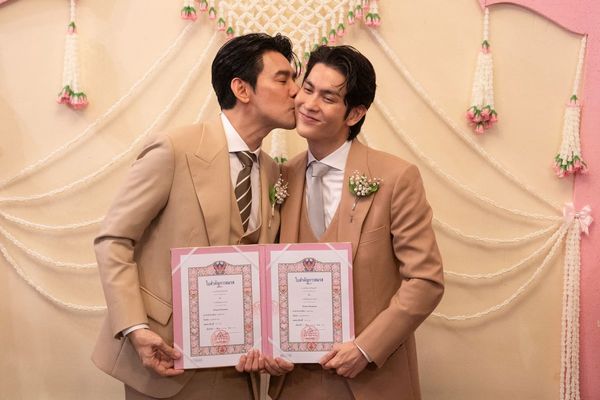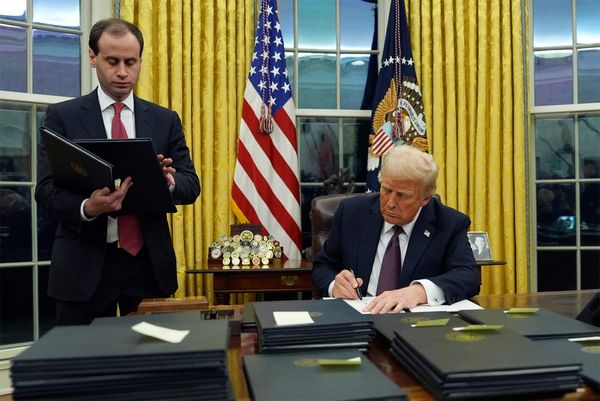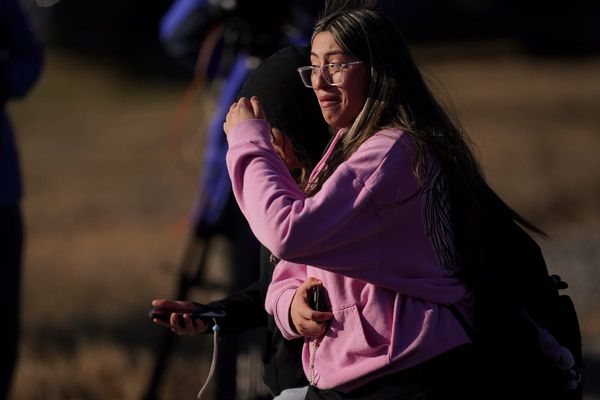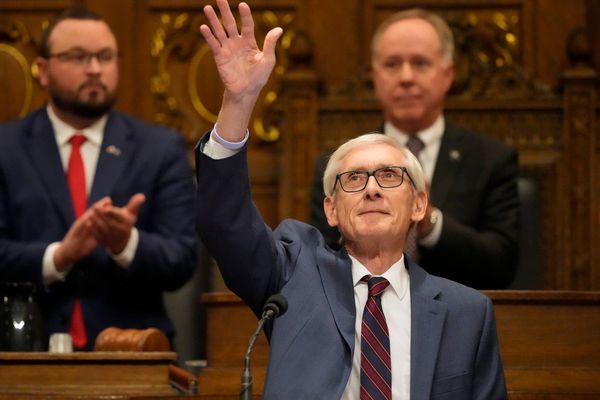
40 years ago earlier this month marked the tragic loss of guitarist Randy Rhoads, who died in a plane crash on March 19, 1982 at the age of only 25.
While Rhoads was a founding member of hard rock group Quiet Riot, it’s his stunning work accompanying Ozzy Osbourne live and on just two studio albums (Blizzard of Ozz and Diary of a Madman) that’s largely responsible for his overdue enshrinement in the Rock and Roll Hall of Fame this past October.
Rhoads treated the guitar as a craft, applying his classical training to evolving hard rock work that more closely resembled arrangements and compositions than off-the-cuff riffs.
Rhoads mother Delores, who held a bachelor’s degree in music, opened a music school called Musonia in North Hollywood, California in 1948, where Rhoads was schooled as a child in the folk and classical tradition before ever picking up an electric guitar. He went on to teach at the school himself, one which is still in operation under the guidance of his brother Kelle Rhoads.

“I remember reading an interview with [Randy] where he said he was seeking out teachers while he was out on the road,” recalls guitarist Steve Stevens. “He’s playing huge arenas with Ozzy and he’s still taking lessons and still learning. That, to me, is the indication of a true musician. A true musician always wants to get better and gain more knowledge. So, I was obviously a fan,” said the guitarist. “His solos were not meandering, improvised, off-the-cuff things. They were compositions within the songs themselves. And that probably hearkens back to his classical background.”
This year marks the 40th for Stevens alongside U.K. punk Billy Idol. Like Rhoads, Stevens picked up an acoustic guitar first, schooled in the flamenco style, and does most of his writing with Idol on acoustic guitar.
To mark the Rock Hall induction of Randy Rhoads, Stevens recently joined The String Revolution, featuring former Rhoads student Janet Robin, for a unique flamenco-fueled take on Osbourne’s “Crazy Train.”
I spoke with Steve Stevens about the legacy of Randy Rhoads, taking “Crazy Train” in a radically different direction, music in the classroom and his process when it comes to writing with Billy Idol. A transcript of our video call, lightly edited for length and clarity follows below.
What drew you to Randy’s guitar playing?
STEVE STEVENS: I’m always a big fan of any guitarist who started very traditionally - like Randy did classical or, in my case, it was flamenco.
The thing that struck me was that I remember reading an interview with him where he said he was seeking out teachers while he was out on the road. He’s playing huge arenas with Ozzy and he’s still taking lessons and still learning. That, to me, is the indication of a true musician. A true musician always wants to get better and gain more knowledge. So, I was obviously a fan.

That struck me as well: Randy was a teacher himself. He was also still being taught right up until the end. I know you spent some time at the High School of Performing Arts in New York and certainly had music in the classroom early. Today we frequently see that’s one of the first things cut from the American curriculum. How important is it having that at a young age?
Stevens: There’s been studies that show that even kids with behavioral issues, when they have music introduced to them, it helps all of their other academic classes. Maybe they’re not going to become a professional musician - but it gives them an outlet.
Music is a shared experience. I always look at what I do as communicating with other musicians - we’re having a dialogue. I think kids pick that up right away. They can jam with each other even if it’s rudimentary. It’s just great for the brain.
I know you played “Crazy Train” with Ozzy before. In diving into the song like that to prepare, what did you learn about Randy’s playing?
Stevens: Well, you don’t muck about with what’s been done. (Laughing) What was great about doing it flamenco style was I didn’t have to worry about that - because it’s such a departure from the original.
When I performed with Ozzy and did it, I felt it was my duty to learn every little note and every little inflection to really honor the guy. There’s not too many guitar players that, if I’m covering a song, I feel that way about. Usually, I’ll interpret it my own way. But Randy… his solos were not meandering, improvised, off-the-cuff things. They were compositions within the songs themselves. And that probably hearkens back to his classical background.

How did you go about working The String Revolution and Randy’s former student Janet Robin on your version of “Crazy Train?”
Stevens: I was actually contacted early on by Janet. She told me it was tied into Randy being inducted into the Rock and Roll Hall of Fame, which Tom Morello spearheaded. I guess she mentioned to Tom that I was being asked to do the solo and he gave it a thumbs up. I thought, “Well, I can’t say no now! I’ve got to do this thing.”
But I kept thinking in the back of my mind, “I bet Randy would appreciate this interpretation.”
You and Randy shared that love of classical guitar and of flamenco guitar. How does that inform your playing whether it’s with Billy Idol or anyone else?
Stevens: Whether it’s pop music or rock or whatever, for me, it’s really about arrangement. And classical music is almost like looking at a math puzzle. Because an orchestra usually has 80 to 100 pieces or whatever. I’m pretty much self taught. But I enjoy learning about how the pieces of the orchestra fit together to create this almost M.C. Escher piece of what music is.
Even when I work with Billy Idol - even though there’s not that many instruments, I’m always looking for ways to orchestrate my guitar in a way that’s not just, “OK. Here’s the chords. I’ll play G, A, D, etc..” I’m always looking for a way to arrange it sonically and part-wise.
And all of my favorite guitar players think that way - Jimmy Page or Jimi Hendrix. All of the greats always looked at their guitar playing as being almost orchestral in their mind.

I feel like sometimes when people mention guitarists from that era, it’s only Eddie Van Halen getting mentioned. But Randy was important. Especially for that time, just how important was he?
Stevens: Yeah. Those were the two titans of the L.A. rock scene. But they’re very different guitar players.
A lot of the other guys that came out, I think it’s very easy to hear the Eddie Van Halen in their playing. Whereas, I think Randy was a little bit older than some of those guys and, I would imagine, grew up with the same influences that I did and that Eddie Van Halen did: Clapton, Jeff Beck, etc.
So I always looked at Randy as more having had one foot in the British, early 70s rock guitar pantheon. I can clearly hear that influence as opposed to somebody that picked up the guitar because they heard the first Van Halen record.
You learned flamenco first. By the time that you picked up an electric guitar in your teens, what did having that backbone in folk and classical and flamenco do for your electric playing?
Stevens: In my mind, I never really delineate between acoustic guitar playing and electric. When you think of Led Zeppelin, you could make numerous albums compiling just their acoustic side. A lot of the guitarists that I really loved always employed a bit of classical, some jazz and bluegrass or American folk music.
But it’s really down to the songs. When you’re playing an acoustic guitar, the purpose of it is to play a song. And I think it instilled in me at an early age the craft of song - and chord structure and melody. As opposed to, if I had initially just picked up an electric guitar… You know, kids want to shred! “Hey, look at me!” It’s almost like Pac-Man, eating up all of the notes.
I think having that acoustic guitar background gave me a solid foundation in song structure.

You and Billy write primarily on acoustic, right?
Stevens: Yeah. That holds true for just about every artist I’ve worked with. If you can make it work with just a couple of acoustic guitars in a room - and the song works - then you’ve got something. You’re not reliant on technology or any other gizmo.
And on this last tour, you guys were playing acoustic and telling stories. What was it like doing that over the duration of an entire tour as opposed to just one or two shows here and there?
Stevens: Hard work! (Laughing)
We kind of fell into doing that when Billy put out his autobiography. He had asked me to accompany him at some book fairs and things where he’d read a bit out of the book and we’d play a song. He’d refer to the story in the book about the song. And people really liked it. Management said, “Hey, could you guys ever envision doing that as a tour?” So we tried it.
I remember the first show. We did it at Club Largo in Los Angeles, a small place of like 250 people. We came off stage and we were exhausted! Because it’s two guys. And you’ve got to fill a lot of air and fill a lot of space. You’ve got to keep that dialogue going.

When you’re writing with Billy, what’s kind of the process or the mindset there? Are you writing to his voice or is it with the idea of telling a story? How do you approach that?
Stevens: I always take my cue from the lyrics. I’m cursed and gifted that way as a guitarist. If you asked a lot of guitarists, “Do you know the lyrics to the song?” “Well, no.”
The goal of what I’m trying to achieve is to help tell this story of a song. And I kind of have to have my road map and know what the emotion behind it is. And that gives me all of the information that I need stylistically.

Your partnership with Billy spans almost 40 years now. Nobody expects early on for something like that to last that long, turn into a career, etc. What does that partnership mean to you looking back on it today?
Stevens: I mean, you never know. You can’t predict these things. A lot of it is chemistry.
We had a musical chemistry from the get-go. Even though, musically, he listens to a lot of different things and came from the London punk rock scene - he loves reggae and things like that. But that’s kind of what, early on, made it work. The fact that I was influenced by early 70s rock guitar and folk and classical. And then our producer [Keith Forsey], had come from the Giorgio Moroder school of doing Donna Summer records. And then Billy is the roots rock/punk rock guy. It allows you as a team to draw on a lot of different influences. And it doesn’t get boring that way - because you’re not all coming from the same side.
Sometimes, it takes a bit of work to figure out, “OK. I’ll introduce a guitar idea.” And somebody will say, “Save it for your own record.” You have to have a thick skin and understand that it’s not personal - that you’re just there to bring out the best in each other. And I think that comes from respect.
And it comes from the love of the end result. After a day in the studio with Billy, I can usually come out with a tune that I genuinely like. So I’m always happy with that.







